 W
WMikołaj Abramowicz or Abrahamowicz (1590s—1651) was a Polish-Lithuanian soldier who was one of the leading military and diplomatic figures of his period.
 W
WAndrzej Olszowski was a political speaker and writer. He was bishop of Chełmno from 1661 until 1674, and was archbishop of Gniezno and the primate of Poland from 1674.
 W
WAnna Dorota Chrzanowska née von Fresen, was a Polish heroine of the Polish–Ottoman War (1672–76), known for her acts during the Battle of Trembowla in 1675.
 W
WKrzysztof Arciszewski was a Polish nobleman, military officer, engineer, and ethnographer. Arciszewski also served as a general of artillery for the Netherlands and Poland.
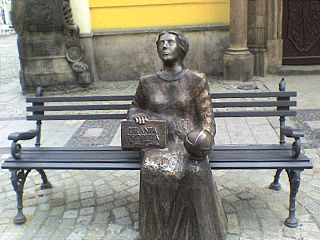 W
WMaria Cunitz or Maria Cunitia was an accomplished Silesian astronomer, and the most notable female astronomer of the early modern era. She authored a book Urania propitia, in which she provided new tables, new ephemera, and a simpler working solution to Kepler's Area Law for determining the position of a planet on its elliptical path. The Cunitz crater on Venus is named after her. The minor planet 12624 Mariacunitia is named in her honour.
 W
WSofia Anna Czarnkowska was a Polish noblewoman, known as the maternal grandmother of the queen of France.
 W
WMikołaj Daniłowicz was a Polish–Lithuanian nobleman and politician. He was Castellan of Lviv from 1614, Treasurer of the Crown Court from 1610, Grand Treasurer of the Crown from 1617, Speaker of the Sejm in 1593, amongst many other positions as governors of various states.
 W
WTeofila Zofia Sobieska, née Daniłowicz was a Polish noblewoman (szlachcianka), mother of Jan III Sobieski, King of Poland.
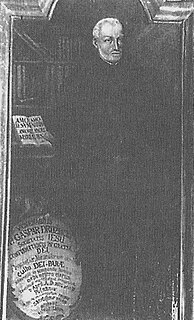 W
WKasper Drużbicki or Gaspar Druzbicius was a Polish Jesuit and ascetic writer.
 W
WJoshua ben Alexander HaCohen Falk was a Polish Halakhist and Talmudist, best known as the author of the Beit Yisrael commentary on the Arba'ah Turim as well as Sefer Me'irat Enayim (סמ"ע) on Shulkhan Arukh. His name also occurs as the Hebrew acronym רפ"כ ("RaFaC") and מהרו"כ ("Ma-HaRWaC").
 W
WGeorge William, also known as George IV William ; Polish: Jerzy IV Wilhelm; 29 September 1660 – 21 November 1675) was the last Silesian duke of Legnica and Brzeg from 1672 until his death. He was the last male member of the Silesian Piast dynasty descending from Władysław II the Exile (1105–1159).
 W
WHedwig Elisabeth of Neuburg was a Polish princess by marriage to James Louis Sobieski. She was the daughter of Philip William, Duke of Neuburg, Berg and Jülich, Elector Palatine of Neuburg, and Landgravine Elisabeth Amalie of Hesse-Darmstadt.
 W
WJan Stanisław Jabłonowski of the Prus III coat of arms was a Polish political writer who was a maternal uncle of King Stanisław I Leszczyński, under whom he served as Crown Chancellor in 1706-09. He also held the positions of Crown standard-holder from 1687, voivode-governor of Volhynia since 1693, and also voivode-governor of Ruthenia from 1697.
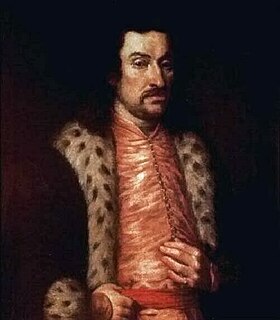 W
WPrince Jeremi Wiśniowiecki nicknamed Hammer on the Cossacks or Iron Hand, was a notable member of the aristocracy of the Polish–Lithuanian Commonwealth, Prince of Wiśniowiec, Łubnie and Chorol in the Crown of the Kingdom of Poland and the father of the future King of Poland, Michael I.
 W
WAdam Adamandy Kochański was a Polish mathematician, physicist, clock-maker, pedagogue and librarian. He was the Court Mathematician of John III Sobieski.
 W
WAnna Aloysia Maximiliane Louise von Lamberg was an Austrian countess who was successively the mistress of Augustus II the Strong, King of Poland, and Aleksander Benedykt Sobieski. She is known to history as Countess Esterle.
 W
WMikołaj Łęczycki, in Latin Nicolaus Lancicius was a Polish Jesuit, Catholic theologian, writer and mystic.
 W
WStanisław I Leszczyński, also Anglicized and Latinized as Stanislaus I, was King of Poland, Grand Duke of Lithuania, Duke of Lorraine and a count of the Holy Roman Empire.
 W
WJadwiga Wypyska née Łuszkowska was a Polish noblewoman, known as the mistress of Polish king Ladislaus IV Vasa.
 W
WShmuel Eidels, was a renowned rabbi and Talmudist famous for his commentary on the Talmud, Chiddushei Halachot. Eidels is also known as Maharsha.
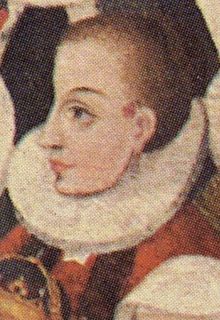 W
WUrszula Meyerin was a politically influential Polish courtier and mistress to King Sigismund III of Poland. Her real surname may have been Gienger, but that remains in dispute; she signed her letters Ursula Meyerin. In the German language, that surname means "chamberlain", "administrator", "manager".
 W
WAtanazy Walenty Miączyński h. Suchekomnaty was a Polish-Lithuanian nobleman and politician, Treasurer of the Crown Court from 1689. He was voivode of Volhynia from 1713 and Starosta of Krzepice from 1677 and Lutsk from 1681. He was made a Count of the Holy Roman Empire in 1683.
 W
WTomasz Młodzianowski was a Polish Jesuit, preacher and writer.
 W
WMarina Mniszech was a Polish noblewoman and warlord who became the Tsaritsa of Russia during the Time of Troubles.
 W
WJan Morawski – Jesuit, theological writer.
 W
WJan Kanty Moszyński was a Polish-Lithuanian nobleman and politician, Treasurer of the Crown Court from 1729. He came from a poor noble family but married the daughter of Augustus II the Strong. His grandfather was Andrzej Ludwik Moszyński. His father, Aleksander Michał, lived in a small village in Podlasie and served as its treasurer. He was awarded the Order of White Eagle on 18 February 1730. Moszyński and more so his son Frederyk August Moszyński (1739–1786) built a notable museum collection.
 W
WJan Karol Opaliński, known as Henri Opaliński in France, was a Polish starost and kasztelan of Poznań. He was the son of Krzysztof Opaliński and Teresa Konstancya Czarnkowska.
 W
WKrzysztof Opaliński was a Polish nobleman, politician, writer, satirist and Governor of Poznań. A notable figure during the Swedish Deluge, Opaliński was a skilled diplomat who opposed King John II Casimir and published many of his works concerning the daily political or social matters in the Polish–Lithuanian Commonwealth.
 W
WPrincess Katarzyna Ostrogska (1602–1642) was a Polish–Lithuanian noblewoman, founder of the city of Biała. She was the maternal grandmother of King of Poland Michał Korybut Wiśniowiecki.
 W
WKlara Izabella Pacowa, born Claire Isabelle Eugenie de Mailly-Lespine, was a Polish court official. She was a lady-in-waiting and confidante of two of the queens of Poland, Marie Louise Gonzaga and Eleanor of Austria, Queen of Poland, and came to play an important part in Polish political life.
 W
WStanislaus Papczyński, born Jan Papczyński, was a Polish Catholic priest who founded the Marians of the Immaculate Conception, the first Polish religious order for men. Prior to starting his own order, he had been a member of the Piarist Order. He took the name of "Stanislaus of Jesus and Mary". Papczyński is widely remembered as a prolific religious writer; his writings include works such as The Mystical Temple of God.
 W
WDaniel Pawłowski was a Polish Jesuit, theological writer.
 W
WMichał Florian Rzewuski was a Polish-Lithuanian nobleman and politician, Treasurer of the Crown Court. He moved to Lviv in 1663 and worked there as a writer (1670–1676) and royal colonel from 1674. He was Treasurer of the Crown Court from 1684, he was also Starosta of Chełm. A brave knight, he participated in almost all the battles of John II Casimir, contributed to the victory of Chocim, further distinguishing himself in the Turkish wars for Jan III Sobieski.
 W
WGrzegorz Radziwiłł Lithuanian: Gregoras Radvila (1578–1613), fourth Grzegorz in Radziwiłł family, was a Polish–Lithuanian noble (szlachcic), Castellan of Trakai in the Polish–Lithuanian Commonwealth.
 W
WPrincess Ludwika Karolina Radziwiłł was a magnate Princess of the Grand Duchy of Lithuania in the Polish–Lithuanian Commonwealth and an active reformer.
 W
WSebastian Sobieski was a Polish szlachcic (nobleman), Court Standard-Bearer of the Crown since 1596, courtier and starost of Rosice and Bohuslav. Member of the Sejm.
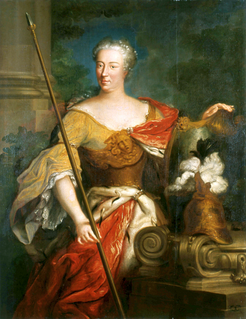 W
WElżbieta Helena Sieniawska, née Lubomirska, was a Polish noblewoman, Grand Hetmaness of the Crown, and a renowned patron of the arts.
 W
WProkop Sieniawski was a Polish noble.
 W
WSigismund Casimir, Crown Prince of Poland, was a Polish prince and the only legitimate son of King Ladislaus IV and his first wife Queen Cecilia Renata. He was named after his grandfather Sigismund III, and uncle John Casimir.
 W
WKatarzyna Sobieska (1634–1694) was the sister of King John III Sobieski of Poland and a noblewoman. She married Władysław Dominik Zasławski in 1650. She was later married to Michał Kazimierz Radziwiłł on 13 June 1658.
 W
WMaria Karolina Sobieska was a Polish noblewoman, daughter of Jakub Ludwik Sobieski. Known as Marie Charlotte or only Charlotte, she was the Princess of Turenne and later Duchess of Bouillon by marriage. Charlotte was the last surviving member of the House of Sobieski.
 W
WJakub Sobieski was a Polish noble, parliamentarian, diarist, political activist, military leader and father of King John III Sobieski. He was the son of castellan and voivode Marek Sobieski and Jadwiga Snopkowska.
 W
WJames Louis Sobieski was a Polish nobleman, politician, diplomat, scholar, traveller and the son of King John III of Poland and Marie Casimire Louise de La Grange d'Arquien.
 W
WMarek Sobieski was a Polish nobleman, starosta of Krasnystaw and Jaworów, and the older brother of King John III Sobieski of Poland. He graduated from Nowodworek College in Kraków and Kraków Academy, then traveled and studied in Western Europe. After returning to Poland in 1648 he fought against the Cossacks and Tatars at the Siege of Zbaraż and at the Battle of Beresteczko. He was taken captive by Tatars in 1652 and then killed by Cossacks.
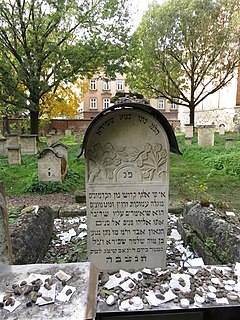 W
WNathan Nata Spira was a Polish rabbi and kabbalist, who served as Chief Rabbi of Kraków. A student of Meir Lublin, Spira played an important role in spreading Isaac Luria's teachings throughout Poland. Spira was the author of a number of works, most notably the Megaleh Amukot.
 W
WAnna Catherine Constance Vasa of Poland was a Polish princess, daughter of King Sigismund III Vasa and his second wife Constance of Austria.
 W
WJakub Wejher, was a member of the Polish line of the Weyher family, a Count of the Holy Roman Empire and member of the Polish–Lithuanian Commonwealth szlachta (nobility). His coat of arms was Wejher. Wejher was the Castellan of Puck and Voivode of Malbork (Marienburg) from 1643–1657, the Castellan of Chmielno, and the Starost of Człuchów, Kiszporek, Bychów and Brzechowo. He is remembered as a pious and tolerant magnate and an experienced military leader.
 W
WAleksandra Marianna Wiesiołowska was the daughter of magnate Marek Sobieski and Jadwiga Snopkowska.
 W
WYossele the Holy Miser was a Jew who lived in medieval Poland in the Kazimierz Jewish quarter of Kraków. His apparent stinginess but hidden generosity is at the center of a well-known tale of Jewish folklore that speaks to one of the highest levels of tzedakah (charity) in the Jewish tradition: giving anonymously. The Holy Miser's tombstone can be found in the Remah Cemetery of Kraków next to the grave of the renowned Rabbi Yom-Tov Lipmann Heller.
 W
WPrincess Gryzelda Konstancja Wiśniowiecka née Zamoyska of clan Jelita was a Polish noblewoman, known as the mother of King Michał Korybut Wiśniowiecki.
 W
WMikołaj Zieleński was a Polish composer, organist and Kapellmeister to the primate Baranowski, Archbishop of Gniezno.
 W
WZofia z Radziwiłłów Dorohostajska (1577-1614), was a Polish noblewoman. She is known as the central figure of a famous scandal, in which she was exposed with adultery and as a punishment imprisoned by her husband and forced to submit to a life of penitence, an affair that attracted considerable attention in contemporary Poland.